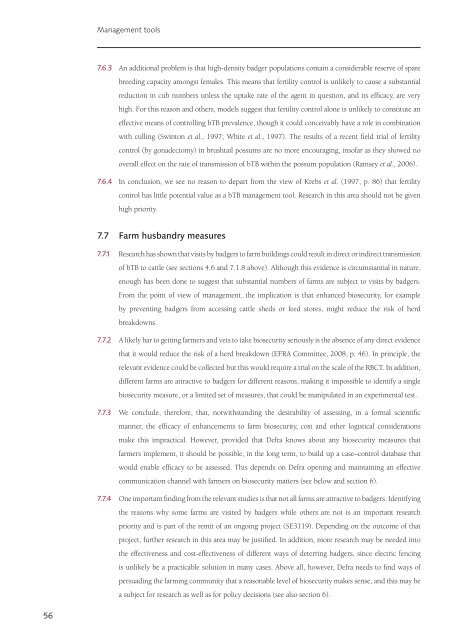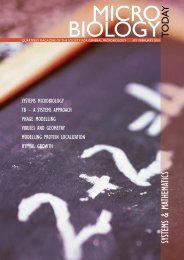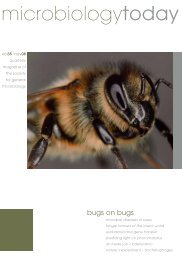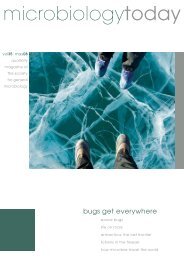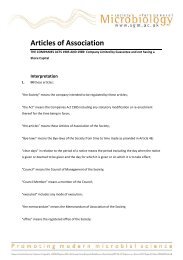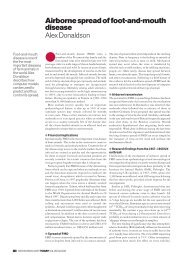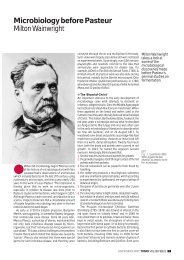final report - ARCHIVE: Defra
final report - ARCHIVE: Defra
final report - ARCHIVE: Defra
Create successful ePaper yourself
Turn your PDF publications into a flip-book with our unique Google optimized e-Paper software.
Management tools<br />
7.6.3 An additional problem is that high-density badger populations contain a considerable reserve of spare<br />
breeding capacity amongst females. This means that fertility control is unlikely to cause a substantial<br />
reduction in cub numbers unless the uptake rate of the agent in question, and its efficacy, are very<br />
high. For this reason and others, models suggest that fertility control alone is unlikely to constitute an<br />
effective means of controlling bTB prevalence, though it could conceivably have a role in combination<br />
with culling (Swinton et al., 1997; White et al., 1997). The results of a recent field trial of fertility<br />
control (by gonadectomy) in brushtail possums are no more encouraging, insofar as they showed no<br />
overall effect on the rate of transmission of bTB within the possum population (Ramsey et al., 2006).<br />
7.6.4 In conclusion, we see no reason to depart from the view of Krebs et al. (1997, p. 86) that fertility<br />
control has little potential value as a bTB management tool. Research in this area should not be given<br />
high priority.<br />
7.7 Farm husbandry measures<br />
7.7.1 Research has shown that visits by badgers to farm buildings could result in direct or indirect transmission<br />
of bTB to cattle (see sections 4.6 and 7.1.8 above). Although this evidence is circumstantial in nature,<br />
enough has been done to suggest that substantial numbers of farms are subject to visits by badgers.<br />
From the point of view of management, the implication is that enhanced biosecurity, for example<br />
by preventing badgers from accessing cattle sheds or feed stores, might reduce the risk of herd<br />
breakdowns.<br />
7.7.2 A likely bar to getting farmers and vets to take biosecurity seriously is the absence of any direct evidence<br />
that it would reduce the risk of a herd breakdown (EFRA Committee, 2008, p. 46). In principle, the<br />
relevant evidence could be collected but this would require a trial on the scale of the RBCT. In addition,<br />
different farms are attractive to badgers for different reasons, making it impossible to identify a single<br />
biosecurity measure, or a limited set of measures, that could be manipulated in an experimental test.<br />
7.7.3 We conclude, therefore, that, notwithstanding the desirability of assessing, in a formal scientific<br />
manner, the efficacy of enhancements to farm biosecurity, cost and other logistical considerations<br />
make this impractical. However, provided that <strong>Defra</strong> knows about any biosecurity measures that<br />
farmers implement, it should be possible, in the long term, to build up a case–control database that<br />
would enable efficacy to be assessed. This depends on <strong>Defra</strong> opening and maintaining an effective<br />
communication channel with farmers on biosecurity matters (see below and section 6).<br />
7.7.4 One important finding from the relevant studies is that not all farms are attractive to badgers. Identifying<br />
the reasons why some farms are visited by badgers while others are not is an important research<br />
priority and is part of the remit of an ongoing project (SE3119). Depending on the outcome of that<br />
project, further research in this area may be justified. In addition, more research may be needed into<br />
the effectiveness and cost-effectiveness of different ways of deterring badgers, since electric fencing<br />
is unlikely be a practicable solution in many cases. Above all, however, <strong>Defra</strong> needs to find ways of<br />
persuading the farming community that a reasonable level of biosecurity makes sense, and this may be<br />
a subject for research as well as for policy decisions (see also section 6).<br />
56


